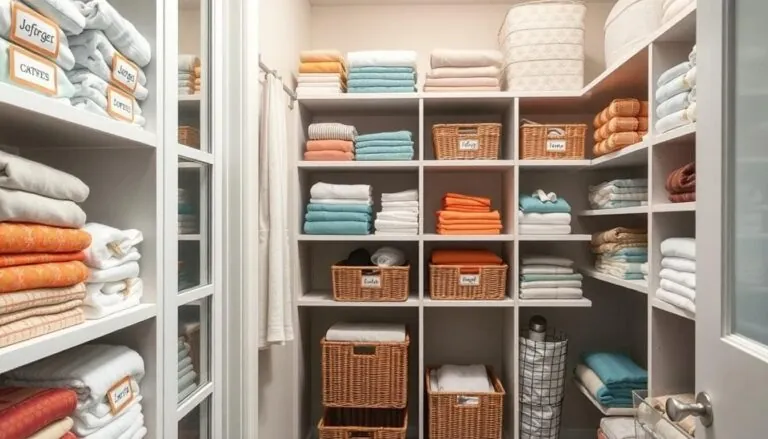Open plan kitchens have taken the world by storm, transforming the way people cook, eat, and entertain. Gone are the days of being isolated while chopping veggies; now, the chef can join the party without missing a beat. Imagine whipping up a gourmet meal while friends sip wine and share laughter just a few steps away. It’s like having a front-row seat to the culinary show!
Table of Contents
ToggleOverview of Open Plan Kitchens
Open plan kitchens combine cooking, dining, and living spaces, promoting a fluid transition between areas. This design fosters interaction, allowing cooks to engage with family and guests while preparing meals. Studies show that over 60% of homeowners prefer this layout, citing its ability to enhance socialization.
Flexibility characterizes open plan kitchens. Homeowners can customize spaces to meet their specific needs, integrating islands or breakfast bars for additional seating. Such modifications make gatherings more inviting and accessible for entertaining.
Lighting plays a significant role in these environments. Natural light flowing through large windows enhances the mood and creates an airy feel. Pendant lights often illuminate islands, providing functional brightness for cooking tasks.
Storage solutions adapt to the requirements of open plan kitchens. Many choose cabinetry that blends seamlessly with the decor, maintaining aesthetic appeal while offering practicality. Open shelving adds a decorative element, displaying dishware and cookbooks while keeping necessities within reach.
Design trends indicate a preference for contemporary finishes. Sleek cabinetry, stainless steel appliances, and quartz countertops frequently appear in these kitchens. These materials not only elevate the space but also ensure durability and ease of maintenance.
Ultimately, these kitchens prioritize community, cuisine, and creativity. They enable seamless entertaining, transforming how families and friends connect. Open plan kitchens create a warm and welcoming environment that encourages culinary exploration and shared experiences.
Benefits of Open Plan Kitchens

Open plan kitchens offer various advantages that enhance the cooking and social experience. These spaces promote connectivity while providing functional design elements.
Enhanced Social Interaction
Enhanced social interaction is a primary benefit of open plan kitchens. This layout encourages chefs to engage with guests during meal preparation, creating a lively atmosphere. Families and friends can easily converse, share moments, and enjoy each other’s company. Studies reveal that over 60% of homeowners prioritize socialization in their kitchen design. The seamless transition between cooking and dining areas eliminates barriers, making gatherings more enjoyable. This design fosters a sense of community, allowing everyone to participate in cooking and enjoying meals together.
Improved Natural Light
Improved natural light significantly impacts the ambiance of open plan kitchens. Large windows and open spaces invite ample sunlight, brightening the entire area. Increased natural light enhances mood and energy levels, transforming the kitchen into a welcoming hub. Pendant lights can complement daylight by providing task lighting where needed. Homeowners benefit from customizable lighting solutions, accentuating the kitchen’s aesthetic appeal. Ultimately, brighter kitchens create inviting environments, perfect for social activities and culinary exploration.
Design Considerations for Open Plan Kitchens
Designing an open plan kitchen requires thoughtful consideration for layout and materials to maximize functionality and aesthetic appeal. The following sections outline key aspects that contribute to successful open plan kitchen designs.
Layout and Flow
Optimizing the layout ensures a seamless flow between cooking, dining, and living areas. Consider placing the kitchen island at the center to create a natural gathering space. Avoid clutter by keeping pathways clear and ensuring easy access to appliances. Integrating an open flow connects different areas while allowing for smooth movement. Using visual boundaries like rugs or cabinetry can help define zones without closing off spaces. Homeowners should prioritize a balance of practicality and openness for an inviting atmosphere.
Choosing the Right Materials
Selecting materials significantly affects the kitchen’s look and durability. Opt for surfaces that are easy to clean and maintain, such as quartz or granite for countertops. Durable flooring options like tile or hardwood withstand high traffic while adding visual interest. Incorporate warm tones in cabinetry to create a cozy feel within the open layout. Combining textures, such as matte and glossy finishes, can enhance depth. Lighting fixtures should complement both the materials and overall design, creating a cohesive aesthetic throughout the space.
Challenges of Open Plan Kitchens
Open plan kitchens come with their own set of challenges that homeowners must consider.
Noise and Distractions
Noise levels can rise significantly in open plan kitchens. Cooking sounds, conversations, and entertainment noise can blend together, creating a chaotic environment. Even simple tasks like chopping vegetables or frying can generate background sounds that disrupt conversations. Guests may struggle to hear each other above the din, impacting the overall dining experience. Distractions often pull attention away from food preparation and shared moments. Homeowners may explore noise-reducing materials or design solutions to mitigate these disturbances effectively.
Lack of Privacy
Privacy becomes a concern in open plan kitchens. The absence of walls means that activities in the kitchen are on full display for guests. Individuals seeking a moment of peace or a private conversation may feel exposed in this layout. Activities like meal prep, cleaning, or intimate discussions can feel less comfortable without designated spaces. Effective design strategies, such as using partial walls or strategic furniture placement, can help create visual barriers. Maintaining a balance between openness and personal space remains important for many homeowners.
Open plan kitchens represent a modern approach to home design that prioritizes connection and interaction. By blending cooking, dining, and living spaces, they create environments that encourage socialization and shared experiences. The ability to customize these kitchens with islands and unique lighting enhances their functionality and aesthetic appeal.
While challenges such as noise and privacy exist, thoughtful design solutions can mitigate these issues. Overall, open plan kitchens not only transform how families engage with each other but also elevate the culinary experience, making them a popular choice for homeowners seeking a vibrant and inviting atmosphere.


